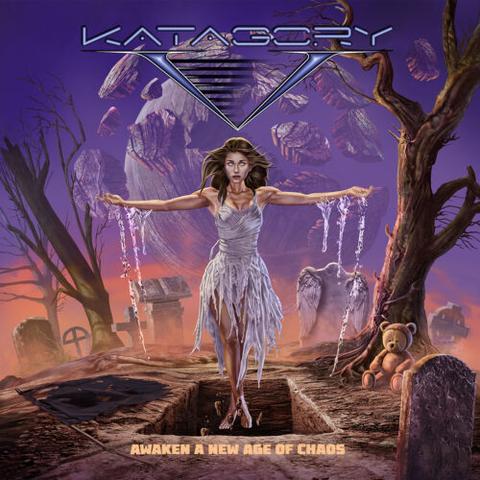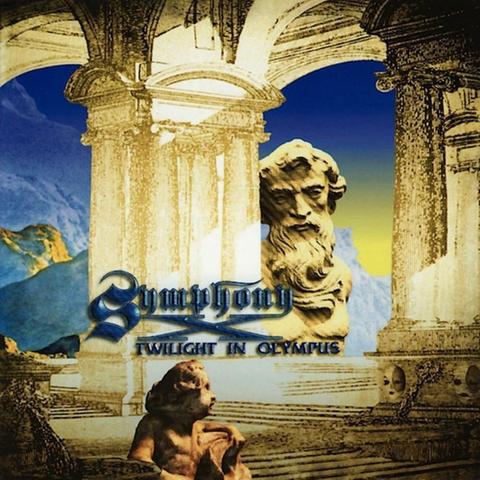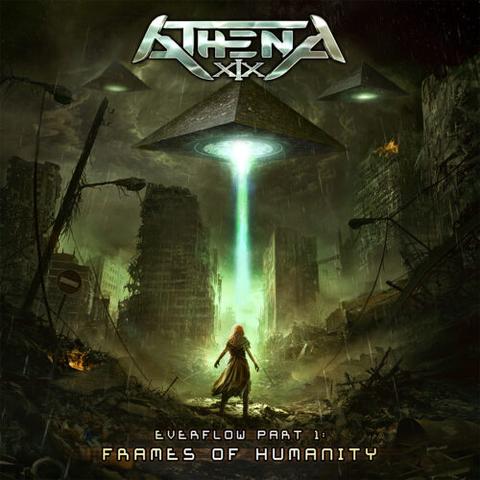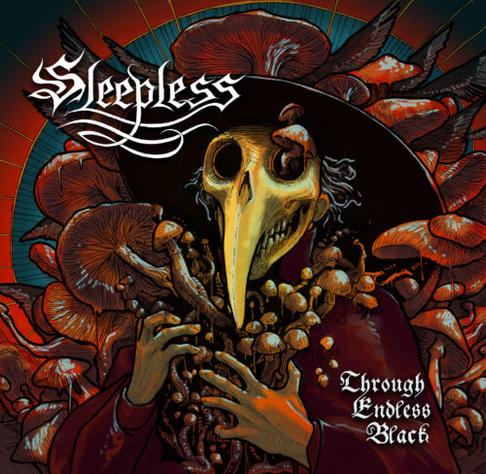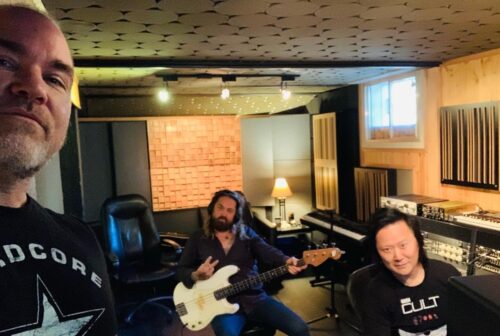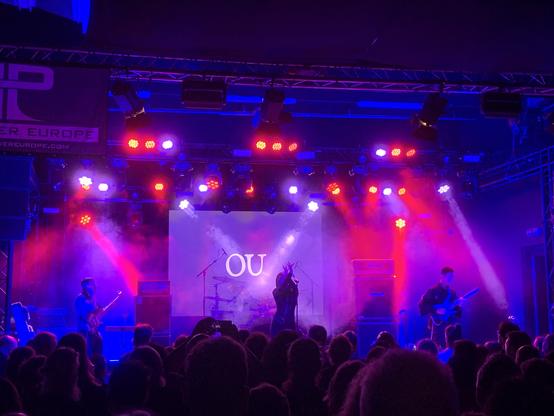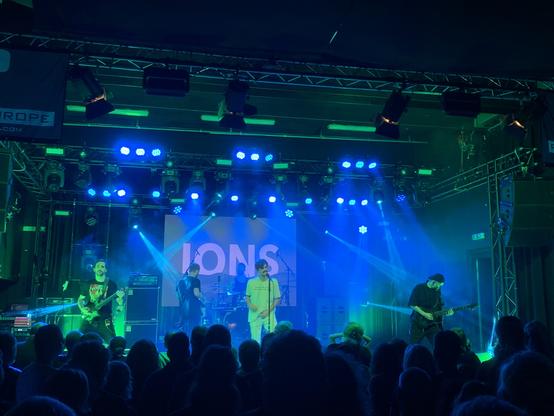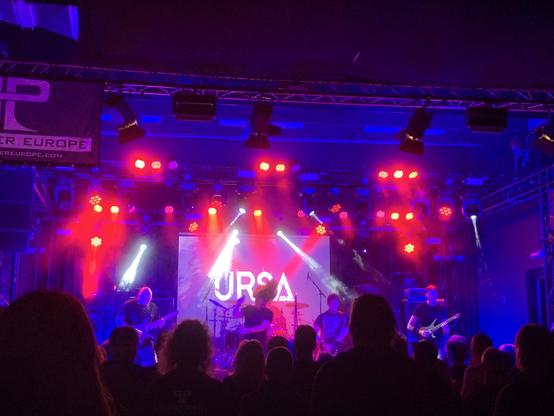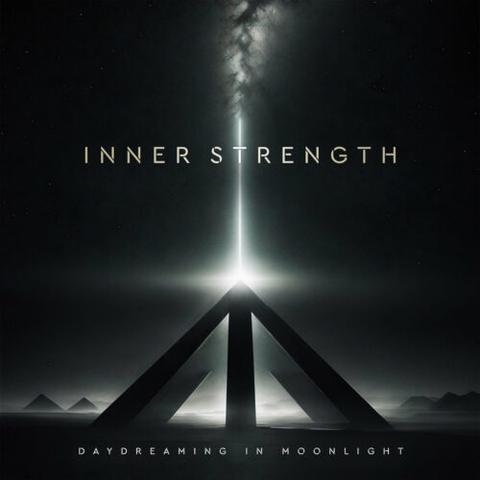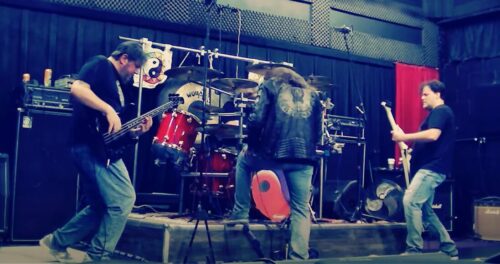AMG Goes Ranking: Sonata Arctica
By Angry Metal Guy
The life of the unpaid, overworked metal reviewer is not an easy one. The reviewing collective at AMG lurches from one new release to the next, errors and nOObs strewn in our wake. But what if, once in a while, the collective paused to take stock and consider the discography of those bands that shaped many a taste? What if two three ONE aspects of the AMG collective personality shared with the slavering masses their personal rankings of that discography and what if the rest of the personality used a Google sheet some kind of dark magic to produce SAT BY IN AWE OF an official guide to, and all-around definitive aggregated ranking of, that band’s entire discography? Well, if that happened, we imagine it would look something like this…
I’m relatively certain that Sonata Arctica not only knows who I am, but that they have requested I never be allowed anywhere near them. Despite them being objectively one of my favorite bands, everything I write about them just sounds mean. For example, I made a list of some of my favorite Sonata Arctica songs and I framed it as their “Unintentional Successes.” I imagine, at this point, that Mr. Kakko and co. personally dislike me, even though we’ve never met. That kind of sucks, because I love them, even if it’s a tense relationship at times.
It’s amazing to think that when I first heard of Finland’s much-better-Stratovarius, I was just a kid. I went out to order Ecliptica because I heard “Letter to Dana” on a web radio station and became completely obsessed with it.1 And yes, there was something slightly pretentious in my initial listens, like watching Eurovision to laugh at it, rather than partake in earnest. I was young and very proud of myself for liking edgy music that normies didn’t like. And Sonata Arctica embodied an unabashed poppiness, Tony’s English often lacked prepositions, but—as I would come to realize—they wrote addictive and creative songs that often defied expectations.
Over the years, I think I’ve come to understand Mr. Kakko and friends, and that has turned into genuine respect. I gladly admit that Sonata Arctica is one of my favorite bands because it’s true. I’ve listened to them a ton and they’ve done a lot more good than bad. I’ve reviewed every one of their records released since I launched AMG in 2009 and will review 2024’s Clear Cold Beyond soon.2 And with time, what I have come to admire the most about Sonata Arctica is their need to evolve. And the results of that aren’t always what I want to hear. But I simply admire musicians who take their shot rather than being scared of failure and grow repetitive as a result.
And for the guy who loves to write a list—like me and my colleagues Twelve and Eldritch Elitist here at the website—that also means that Sonata Arctica has an eminently rankable discography of 10 full length (without ranking the re-recordings and acoustic records). And motherfucker if we aren’t going to rank the shit out of that discography right here.
From Worst to First. You know the drill. – Angry Metal Guy
The “But Seriously, Why?” Tier
#10: Talviyö (2019) — Talviyö is the band’s worst album, bar none. The problem with Talviyö is that it is utterly forgettable. For the first time in their career, they released an album that didn’t seem like Tony was straining against anything other than his will to be recording an album. It would not surprise me to hear that after an intensive career, the man who once wrote about wishing to leave the show behind was suffering from a touch of burnout. As I wrote in my review, Talviyö is “an album that has no tension, no real experimentation, and the dynamic range of a brick wall.” It is the only Sonata Arctica album from which I do not like a single song. They’ve got nine other records worth spending time with. You can comfortably skip Talviyö unless you’ve got a trauma in the Anal Stage.3
#9: Stones Grow Her Name (2012) — Not to keep quoting myself, but I think I succinctly summed up Stones Grow Her Name when I wrote, “Stones Grow Her Name is like the combination of the band’s worst instincts and new sound coalescing into a record that is simultaneously uneventful but provocative in its mediocrity.”4 I’ve softened some since then, and there are definitely some standouts here that make it better than Talviyö. “Losing My Insanity” and “Somewhere Close to You” pack a punch, with the latter featuring genuinely interesting counter melodies and flourishes. And despite laughing at it back in 2012, “Don’t Be Mean” has really grown on me.5 But the weird banjo-infused Americana thing will forever ruin Stones for me. I can follow Tony to a lot of places, but cultural appropriation was a bridge too far.
The “Good But Flawed” Tier
#8: Pariah’s Child (2014) — Is Pariah’s Child the first example of the Sonata Arctica apology tour? After 2012’s foray into banjo-fueled demonic nightmares (see above), Pariah’s Child sported the classic Sonata Arctica logo and had a wolf on the front.6 And there are some good things on Pariah’s Child. “What Did You Do in the War, Dad?” achieves Peak Kakko, balancing awkward and cheesy with emotional and brilliant. “Half a Marathon Man” is an energetic and catchy track that complements other high points like “Cloud Factory.” But the lows here are low: “X Marks the Spot” is cringe af; “Love” is among the worst things the band has ever written; and there’s a feeling that I can’t escape here that Pariah’s Child was an album made under the duress of harsh criticisms from Stones Grow Her Name. And I think that undermines its staying power for me.
#7: Unia (2007) — AngryMetalGuy.com did not exist in 2007, so we have been spared the rambling, linear, and—if I’m totally honest with myself—ultimately whiny review that I would have written about Unia at the time. And while definitely not my favorite Sonata Arctica album, one can hear the blueprint for their better material from the late era. And you know what? Unlike Pariah’s Child, it feels like they were just doing what they wanted to do at the time. It’s too damned long and not everything works, but it was a far more vital albums than I think any of us were willing to admit at the time. Unia opens particularly strongly with “In Black and White” and “Paid in Full,” the record rips it up on “The Harvest,” while “It Won’t Fade” features one of my favorite Sonata Arctica choruses.7 Say what you want, Unia is pretty well-produced and features seriously lush orchestral arrangements. And sure, it’s brought down by “Caleb” and snoozy tracks like “For the Sake of Revenge,” but it laid the groundwork for a successful second act.
#6: Silence (2001) — Silence was my first Sonata Arctica album. After hearing “Letter to Dana” on a web radio station, I went to order Ecliptica straight away. Weirdly, two or three days later I received promos from my then-boss and now AMG-alum Al Kikuras with the promo for Silence. To my dismay, I didn’t love it. Basically, I think Silence is Sonata Arctica‘s answer to Fear of the Dark. In many ways, it’s an iconic record because of its high points: “Wolf & Raven,” “Weballergy,” “San Sebastian” and “Black Sheep” are all excellent songs that I want to hear live. But at an hour long, it also included shitshows like “The End of This Chapter,” “Last Drop Falls,” and the worst followup to Ecliptica’s Best. Power. Ballad. Ever…: “Tallulah.” All-in-all, this record is both great and flawed. See, it’s Fear of the Dark!
#5: Ecliptica (1999) — My sense is that Ecliptica is where many fans’ relationship both started and ended and I think that’s a shame.8 While loaded with absolutely top tier, undeniable classics like “UnOpened,” “Letter to Dana,” “FullMoon” and “Blank File,” I’ve always felt like the songwriting here was just immature compared to a lot of what the band would go on to do. They proved that they could produce great, catchy power metal and they could do it really well here. And they wrote some of my favorite metal songs ever—and the best power ballad since the ’80s—but the band has gone on to heights that they weren’t even close to reaching here. This may, in fact, be the band’s most overrated record, even if I still love it.
#4: The Ninth Hour (2016) — “As a whole, The Ninth Hour is interesting, surprising, and thankfully free of banjo” is how I summarized the nice things I had to say about the album when it dropped. And I stand by it. The Ninth Hour is an example of how when Kakko hits, he really hits. Gripes about the production aside, The Ninth Hour is full of adventurous songs and ideas—even some older-fashioned ones—but doesn’t feel like an Apology Tour record, but rather just finds Tony doing Tony. The record’s crowning glory may in fact be “We Are What We Are,” a song that so bleakly encapsulates the problems facing the world because of humanity that it caused me to remark to my fellow writers “fatalistic Kakko may be the best Kakko” in Slack. But “We Are What We Are” isn’t an exception, The Ninth Hour is an album chock full of songs, riffs, and lyrics worth hearing.9 Still, it’s not without its flaws, and the fact that it sounds bad makes it hard to rank higher.
The “Wait, Is Sonata Arctica Actually Finland’s Best Export?” Tier
#3: Winterheart’s Guild (2003) — Winterheart’s Guild is where Sonata Arctica truly clicked over from good to great for me. While their first two albums are considered Europower royalty by so many fans of the genre, Winterheart’s Guild found them adding brilliant new wrinkles. As is often the case, it’s the higher quality slower and more progressive tracks that make Winterheart’s Guild better than its predecessor. In particular, “Broken” is a highlight, improving on what didn’t work on “Sing of Silence.” And while closer “Draw Me” drips like badly made queso, it really shows off Kakko’s lungs and is the perfect way to round out the album. And aside from these songs, the rest of the album is straight bangers. My particular favorite is probably “The Cage,” which easily could have been on either of the first two records, but there isn’t a bad song on here.
#2: The Days of Grays (2009) — I didn’t used to love The Days of Grays as much as I do today. In fact, I had a bit of a U-shaped trajectory with the album. When it was released in 2009, following Unia, I wanted some of that intensity from earlier albums back. But the band didn’t break out the old logo, even if they did rework an old demo for “Flag in the Ground.” Instead, they just kept writing in a vein that really cemented their vision. Like so many first albums with a new sound, Unia hadn’t quite solved their new sound yet. And, for me, it’s The Days of Grays where the late-Sonata Arctica sound really began to clarify. Weird and progressive? “The Dead Skin” does that so well. Big, complex and orchestral? Try on “Deathaura” for size! Surprising, absurd and macabre? “Juliet” is absolutely brilliant.10 We even get fatalistic Kakko being fatalistic on “As if the World Wasn’t Ending.” This album doesn’t have a flaw and anyone who tells you it does is leading you astray. Even as long as it is, The Days of Grays is a brilliant record.
#1: Reckoning Night (2004) — I remember getting my hands on Reckoning Night and dang, it was good. At 20 years olde this year, I can still remember those first listens like it was yesterday. What’s brilliant about this album is the way in which you can witness their sound starting to really solidify. While they were getting better as songwriters on Winterhheart’s Guild, Reckoning Night is where the combination of their old sound and the basis of their new sound met and created perfection. The highs on the album are really high. Again, even the mid-paced stuff that tends to be the band’s weakest moments—like the rocky “Blinded No More”—makes me want to grill burgers and drink shitty lager rather than skip it. “Ain’t Your Fairytale” and “Don’t Say a Word” are classics, and almost every song on here is encore-worthy on a setlist. The one black eye is “My Selene,” which would be a welcome replacement on several of their albums, but is a bit too safe in the context of Reckoning Night. Still, if you want to hear the Platonic ideal of the Sonata Arctica sound? It’s contained in these 55 minutes of brilliant, olde power metal.
Eldritch Elitist
Upon first discovering power metal via the majesty of DragonForce—at precisely the correct age for such majesty to take full effect (13 and change)—I began hunting for more. My search quickly led me to PureVolume, where I encountered Sonata Arctica‘s “Victoria’s Secret,” and I was immediately hooked. Sonata Arctica didn’t just have the speed and melodic prowess of DragonForce; they had angst. I was drawn in by the perpetually lovelorn lyrics of one Tony “No Bitches” Kakko,11 which resonated more strongly with my intensely hormonal adolescent self than I care to admit. I became a Sonata Arctica obsessive in short order, just in time for Unia to rear its head, along with the band’s proclamation that they were “bored as fuck” with playing the type of music I’d come to love so dearly. They have backpedaled to their power metal roots on multiple occasions since then, always in seemingly obligatory fashion, but their greatest post-heyday successes are often found in their most experimental works. Such experimentation makes a ranking as this one a viable endeavor. Prepare for a whole bunch of weirdness and cringe, which will gradually wane (yet never entirely fade, not really) as we make our way to the number one spot.
#10. Talviyö (2019) — I’m enough of a fan of Sonata Arctica that I generally assume a solid sense of what the band is setting out to do with each new album. I have no fucking clue what they were doing with Talviyö. Part of that is because not so much as a single note manages to stick with me. Its melodies, riffs (wait – are there any??), and writing are so unassuming that I can’t process the album because it refuses to exist in my memory. The production shares the remainder—and perhaps the lion’s share—of the blame. Detractors often compare Sonata Arctica unfavorably to Christmas music, but most classic holiday fare has edgier and more impactful production than this muddled, soft rock-adjacent mess. The death knell comes from a career-worst showing from Tony Kakko, whose muted, nasal performances give the impression that he caught a cold just before tracking vocals, and no one could be bothered to re-book his studio time. I sort of like the chorus of “Message from the Sun,” so I’ll give that a shout-out so that I have something from Talviyö to offer the ranking playlist. Now, please excuse me as I never listen to it again.
#9. The Days of Grays (2009) — It hurts to rank The Days of Grays so low when its first three tracks (excluding the intro) are so good. “Deathaura” is a creepy, yet ultimately somber and lovely epic, and both “The Last Amazing Grays” and “Flag in the Ground” are straightforward power metal romps that could have slotted comfortably into Reckoning Night’s tracklist. Every single song that follows, with the exception of the dramatic “Juliet,” is an absolute slog. The then-recent departure of guitarist Jani Liimatainen is nearly tangible, evidenced in the plodding guitar work comprising stale power chord progressions and mindless, metalcore-esque chugs. Tony Kakko’s vocal melodies, meanwhile, represent more of an approximation of Sonata Arctica’s once-prized romanticism than the genuine article. Beyond its scarce highlights, this album is by and large a chore to get through in one sitting, and on most days I’d sooner pick the dogged competence of Unia than trudge through the full hour of The Days of Grays.12
#8. Unia (2007) — You had to have been there to understand how reviled Unia was at release. It arrived hot on the heels of several “experimental” departures from established power metal titans such as Stratovarius, Blind Guardian, and Edguy; it felt like traditional power metal was dying, and with Unia, Sonata Arctica threw more fuel on an already furious fire. In retrospect, while its renewed stake in prog and de-emphasized melodies certainly signaled the end of Sonata Arctica’s heyday, Unia is basically the consummate AMG 2.5. Its material is competent, and the band performs it with respectable conviction. Yet the material isn’t just forgettable; it’s un-memorable. I’ve returned to Unia many times over the years, yet outside of the decently catchy “Paid in Full,” I could never possibly recall a single note from it without having been recently exposed. If nothing else, it’s worth a listen for its unintentionally hilarious lyrics, especially this zinger from “Caleb”: “The words were not meant to hurt, only destroy you, my stupid son.”
#7. Pariah’s Child (2014) — Sonata Arctica went hard in emphasizing Pariah’s Child as a return to power metal form, going as far as to revert to their old logo, plastered on an album cover that nowadays would be the result of entering “Generic Sonata Arctica Album Art” as a prompt into your non-ethical AI art generator of choice. Pariah’s Child certainly did not reprise the band’s glory days, but it’s definitely fun, if frontloaded. In a sort of reverse Days of Grays scenario, the final three tracks can’t live up to the seven which precede it; “X Marks the Spot” is just embarrassing, “Love” might be the band’s worst ballad, and “Larger Than Life” is easily the most forgettable of Sonata Arctica’s long-form tracks. On the flipside, “Running Lights,” “Blood,” and “What Did You Do in the War, Dad?” are all late-career highlights that have lured me back to Pariah’s Child on occasion. It might just be the least consistent album of this band’s career,13 but really, when it comes to Sonata Arctica’s discography, doesn’t that make it kinda poetic?
#6. Stones Grow Her Name (2012) — The initial reception to Stones Grow Her Name from fans and journalists was so negative that I gave it one skeptical half-listen listen back when it released, and never returned until buckling down for this ranking. In what is easily the biggest surprise of this ranking process, I found that I actually like it quite well. It pays dividends to divorce Stones Grow Her Name from the context of Sonata Arctica’s history. A collection of catchy, rock-oriented power metal songs, its solid hooks and energy level feel mightily refreshing coming off the heels of the sluggish The Days of Grays. There are songs here that could have been fan favorites in any other context (especially “Losing My Insanity”), but its quirky novelties are generally a blast (“Alone in Heaven,” “Cinderblox”), and I’ve even learned to embrace the cringe of the infamous “Shitload of Money” (What she got??). The sequels to “Wildfire” remain totally perplexing in concept, but are pretty entertaining in execution. And really, a simply fun time is a best-case scenario when dealing with post-Reckoning Night Sonata Arctica, and there really isn’t an album from this era that’s more fun than this one.
#5. The Ninth Hour (2016) — Holy shit, Tony Kakko, wake up. The Ninth Hour finds Sonata Arctica’s frontman in a borderline narcoleptic state for much of its runtime, with sleepy vocals seemingly attuned to fit the record’s melancholic mood. While I’m not a huge fan of Tony’s voice on this record, I am a fan of the album itself. It’s generally quite catchy in that cheesy, romantically bittersweet way that made me fall in love with Sonata Arctica in the first place, while packing in some genuine jams (“Fairytale,” “Rise a Night”), moodier pieces (“We Are What We Are,” “Among the Shooting Stars”), and one of my favorite ballads the band has ever written (“Candle Lawns”). “White Pearl, Black Oceans, Pt. II” sweetens the deal, a surprisingly compelling extended epilogue to the original that I find much more engaging than the “Wildfire” sequels. If speed is all you value in Sonata Arctica then you likely won’t get much out of The Ninth Hour, but I personally find it to be one of the only modern records where Kakko and Co. are making the music they want without compromises, and the only one that is bereft of any notable weak points.
#4. Winterheart’s Guild (2003) — Winterheart’s Guild is the most richly atmospheric and darkly romantic record in Sonata Arctica canon. Yet as much as I love it, I’ve never felt comfortable putting it in league with the other three records of the band’s progenitive quadrilogy. It feels at odds with itself, with tracks like the downright morose “Gravenimage” and “Broken” clashing with the bouncy, relatively silly “Champagne Bath” and “Silver Tongue.” This conflict comes to a head with “The Ruins of My Life,” one the most frustrating song in Sonata Arctica history, which begins life as a monumental power metal battle anthem only to kill its own momentum with an utterly perplexing anti-climax14. Still, there are great power metal jams to be found in “Abandoned, Pleased, Brainwashed, Exploited,” “The Cage,” and “Victoria’s Secret.” Winterheart’s Guild’s dreamy aesthetic helps these tracks (and the record as a whole) stand out in the band’s discography, as does the bass-heavy production featuring guitars so heavy, they’d feel right at home on a doom metal record.
#3. Ecliptica (1999). Ecliptica opens with what might be the best three-song run in all of power metal. There are some other songs on the album as well!
Okay, that’s ludicrously harsh; Ecliptica is a fantastic power metal record, but I would be lying if I said it was perfectly paced. “Replica” and “Letter to Dana” are great ballads that should have been separated to opposite ends of the record. The same goes for the back-to-back noodle attack of “UnOpened” and “Picturing the Past,” especially as these songs are Ecliptica’s weakest cuts.15 Otherwise, I struggle to think of a power metal debut that boasts as many iconic tracks as Ecliptica, or one that establishes its artist’s aesthetic so soundly and immediately. Sure, Sonata Arctica was largely aping Stratovarius in those early days, but their distinctly frost-glazed and romantic earnestness was fully intact from the opening measures of “Blank File.” Right out the gate, Ecliptica didn’t just match the quality of Sonata Arctica’s primary influence; it surpassed them.
#2. Silence (2001) — Silence is a bit longwinded. “Last Drop Falls” should have been left on the cutting room floor (there’s a reason why “Tallulah” is the Silence ballad that gets live play), and “The Power of One,” for all its brilliance, could stand to lose a few minutes. Editing qualms aside, Silence represents one of the best collections of power metal one is likely to find. “…of Silence” leading into “Weballergy” makes for one of power metal’s most exhilarating album introductions. “Black Sheep” and “Wolf and Raven” are neoclassical shredfests on par with anything [Luca Turilli(/Leone)’s] Rhapsody [of Fire] ever wrote,16 and four other songs besides (especially “San Sebastian”) provide exemplary cases of double bass-driven power metal. The fact that Silence lightly experiments with the prog elements that would more greatly define Sonata Arctica’s two following albums only makes it that much more engaging and replayable. Though it may be a smidge unwieldy, I absolutely adore Silence.
#1. Reckoning Night (2004) — I fucking hate “Blinded No More.” It’s an awful, plodding mess, devoid of hooks and energy, and a glaring blight on what is otherwise a perfect record. Reckoning Night, stinky second track aside, is the culmination of Sonata Arctica’s efforts at the height of their glory days. Its expected speed-driven numbers universally excel, yet it somehow shines even brighter when the band gets experimental. With theatrically progressive power metal tracks ranging in theme from body horror Pinocchio (“The Boy Who Wanted to Be a Real Puppet”) to societal vengeance via mass arson (“Wildfire”), Reckoning Night is downright weird, and it masterfully interplays that weirdness with the band’s established strengths. There’s also the lengthy and compelling “White Pearl, Black Oceans,” which, while almost hysterically melodramatic, might just be my favorite song in the band’s history. In short, Reckoning Night is a complete realization of everything Sonata Arctica aimed to achieve from the start, and one of my favorite albums of all time.
Twelve
I love Sonata Arctica nearly as much as I am frustrated by Sonata Arctica. Rarely has a band vexed me so, but then, rarely does a band try out seemingly every new idea that comes into their heads the way these guys do, consequences be damned. I joined the ranks of the band’s fans around 2009, shortly after the release of The Days of Grays, and so was able to enjoy the full Sonata Arctica experience in reverse—”meeting” the band as a symphonic prog-esque sort of creation and moving backwards to realize that they had the power metal inside them all along. You might also say that I became a fan at exactly the wrong moment, at a time when the band’s greatest hits were already well behind them. I have mixed feelings on that—that’s what the list below is for. There are Sonata Arctica albums I absolutely love and ones I’d rather hadn’t existed at all, and, now that I think about it, that’s a pretty rare thing to say about a band you like. Nevertheless, I am looking forward to the imminent release of Clear Cold Beyond and will continue to stick by these guys no matter what they come up with next… which, given their history, is a pretty trusting statement.
The Ranking:
#10. Talviyö (2019) — This will be a short entry, mainly because I don’t remember most of Talviyö—when I think on it, I remember an obscenely compressed-sounding thing with guitars that sound like… not guitars. Nothing on this album, whether in the songwriting, the production, or the approach, resonated with me, and so this is a very easy album to simply rank last without putting too much thought into it. This is the only Sonata Arctica album I simply never came back to.
#9. Silence (2001) — I am very excited to torpedo my credibility here: I just don’t like Silence. A lot of the songs blur together, making the hour-long runtime seem long, and the hooks don’t quite land for me. In later years, Sonata Arctica’s talent for making quiet, emotional power ballads feel deeply meaningful, but even “The End of This Chapter” and “Sing in Silence” don’t work for me. The whole album is just too much, and it would take the slowing down that happened on Winterheart’s Guild and Reckoning Night to produce a sound that could convert me into a fan—this zingy weirdness just didn’t do it.
#8. The Ninth Hour (2016) — I found that The Ninth Hour had very little staying power for me, but I did like what I heard from it. Songs like “Life” and “Till Death’s Done Us Apart” feel like an earnest shot at a genuine return to form, and it was invigorating to hear genuinely catchy, moving, and fun melodies from Sonata Arctica in 2016. But when I walked away from the album, I never felt any desire to return to it. It pops up here and there, but even now I’m struggling to just remember how the songs I liked on this album go. When I listen to them they’re good, but across an uneven album, a lack of memorability was the unfortunate death knell that keeps this one low on my list, promising though it may have been.
#7. Pariah’s Child (2014) — Speaking of returning to form, Pariah’s Child was meant to be exactly that, a breath of fresh air after the ultra-weirdness that was Stones Grow Her Name. And it was a breath of fresh air, filled for the most part with strong songs and clever ideas. I’ve heard bad things said about “X Marks the Spot” but it’s an album highlight for me17 (I wouldn’t attempt to justify “Love,” however). Really, I don’t have much bad to say about Pariah’s Child—just nothing overwhelmingly positive either. It’s a solid album with a solid theme and a handful of really good songs, which should give you an idea of how much I like the rest of the Sonata Arctica discography.
#6. Stones Grow Her Name (2012)18 — Without question, Stones Grow Her Name was a grower. As a general rule, I love it when bands go earnestly goofy stuff (X Marks the Spot! X Marks the Spot!), but this one took some time to get used to. Even now, I’m debating if I let it climb too high on this list,19 and I still think of it as “that” album, the one where Sonata Arctica just kind of dove off the deep end to see what happened and published the result anyway. By the time this came out, I was firmly familiar with the rest of the band’s discography, so I was completely thrown by it. But after a while, the earnest corniness of “I Have a Right,” the familiarity of “Losing My Insanity” and “The Day,” and the scope of the “Wildfire” duo won me over. I understand why people don’t like this Stones Grow Her Name, but I can’t agree anymore. It’s not a knockout by any stretch, but its heavier, often-angrier, and more experimental nature works for me, and I love that the band was willing to release it despite the incredible shift from The Days of Grays. Angry Metal Guy’s Law of Diminishing Recordings™ indeed.20
#5. Ecliptica (1999) — It’s amazing that Ecliptica holds up as well as it does, but there’s just something about this enthusiastic “everything and the kitchen sink” approach to power metal that warms my heart to this day. It’s just so fun! “Kingdom for a Heart” is, of course, a classic, and I can randomly get the chorus of “Destruction Preventer” stuck in my head just from seeing the word “preventer” in print. I didn’t love “FullMoon” as much as everyone else seems to have, but it’s another great example of the young Sonata Arctica throwing themselves on the CD and striking gold high-quality silver. A lot of good debuts in this style have that x factor, that clear sense of passion and excitement and love for what they’re doing and for that, Ecliptica can always put a smile on my face.
#4. Winterheart’s Guild (2003) — Winterheart’s Guild is a beautiful album. It is such a leap from Ecliptica and Silence, but it’s the album I associate most with modern-day Sonata Arctica; when I think about that sound, I think about this album. What Winteheart’s Guild does well is that it balances light and dark themes expertly, while finally, finally allowing the keyboard to shine as the band’s secret weapon. Songs like “Victoria’s Secret” are embedded in the band’s legacy for good reason. I love the speedy touches—”The Ruins of My Life” still sounds like a young power metal band finding their feet—but with touches of maturity that would dominate the following albums. Really, that’s what I like so much about Sonata Arctica on Winterheart’s Guild, you can hear them begin to mature as a band, but that early enthusiasm is still there in a way that they don’t quite repeat again.
#3. Unia (2007) — I’ve never understood why so many people dislike this album. Maybe it’s a question of expectation, and I was lucky enough to discover the band after Reckoning Night? Either way—Unia is awesome. From the first few seconds of “In Black and White” you know what you’re getting here—dark, heavy, angry Sonata Arctica, and none of their albums since have been quite so dark. I love the guitar tone, Kakko’s impassioned singing, and even the lyrics. It’s not often you say that about a Sonata Arctica album, but the thought is evident in songs like “Caleb” and “The Vice,” both in composition and storytelling. It’s hard to adequately explain what it is about Unia’s aesthetic that appeals to me so strongly, but I’ve always found it to be a solid, compelling, heavy album from start to finish.
#2. The Days of Grays (2009) — The Days of Grays made a real run for #1 on this list, and the fact that it was my introduction to Sonata Arctica certainly helped its case. By dialing back on the heaviness from Unia and focusing more on melody, this album forged a memorable identity at a time when the band’s own must have felt a little uncertain. Its real triumph, however, is the spotlight it shines on what has always been, to me, Sonata Arctica’s greatest strength: Tony Kakko’s singing. Songs like “The Dead Skin” and “Juliet” would be almost typical played by most bands writing symphonic power or progressive metal, but the way Kakko’s voice takes you through these songs is almost magical. There are nods to the band’s power metal roots in “Flag in the Ground,” to the band’s innate weirdness in “The Truth Is out There,” and it’s all tied together by an exceptional use of darker themes, vocal melody, and orchestration. Every new album I hope will be a call back to this one, and every time The Days of Grays continues to stand—nearly—alone.
#1. Reckoning Night (2004) — I feel like I’ve written a few controversial opinions since I sat down to put this section together. I also feel I am finally returning to the fold when I say that Reckoning Night is a triumph of an album, and Sonata Arctica’s best. Looking back, it really should be no surprise that this was the predecessor to Unia, but it was also a logical progression from Winterheart’s Guild, upping the heaviness and symphonies while staying reasonably rooted in the band’s power metal… roots. The result is songs like “Ain’t Your Fairtyale,” a terrific power metal tune, “Don’t Say a Word,” a phenomenal experiment in more progressive power metal, and “White Pearl, Black Oceans…”, an emotional behemoth that looms over the album, and, to some extent, the rest of the band’s career. Kakko is again the star; his choral work is seldom better than in this album, and the complement of keys, solos, and riffs that know when to prop him up and when to excel on their own. It’s not a perfect album—none of Sonata Arctica’s are—but it’s the closest they’ve come and has always been a reliable collection, regardless of occasion or mood.
#1999 #2001 #2003 #2004 #2007 #2009 #2012 #2014 #2016 #2019 #Ecliptica #Europower #FinnishMetal #PariahSChild #ProgPower #ProgressiveMetal #ReckoningNight #Silence #SonataArctica #StonesGrowHerName #Talviyö #TheDaysOfGrays #TheNinthHour #Unia #WinterheartSGuild
